What is the Anchor Symbol’s Historical Meaning?
The anchor symbol, deeply rooted in nautical traditions, originally served to secure vessels and maintain stability in turbulent waters. Over time, it has transcended its maritime origins to embody broader meanings across cultures.
In ancient Mediterranean societies, it symbolized safety and resilience, while Romans and Greeks associated it with stable foundations and dualities. In Christianity, the anchor signifies faith, hope, and salvation, and in Hinduism and Buddhism, it denotes spiritual grounding.
Modern interpretations emphasize steadfastness and perseverance. Anchor tattoos and jewelry reflect these themes, resonating with personal narratives and enduring values.
Discover how these meanings evolve in contemporary settings.
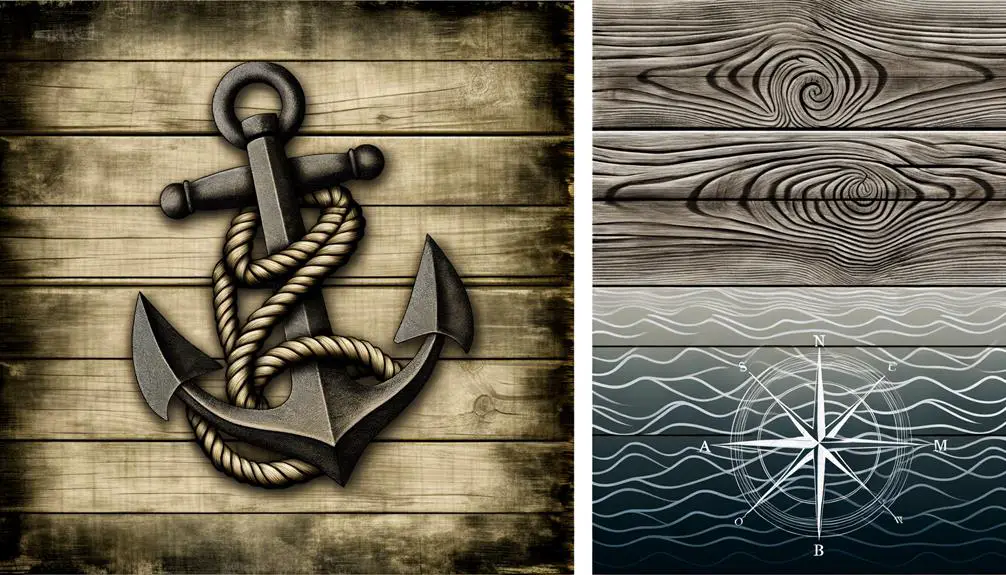
Key Takeaways
- The anchor symbolizes stability and safety, rooted in its nautical origins.
- In Christianity, the anchor represents faith, hope, and salvation.
- Ancient cultures viewed the anchor as a symbol of resilience and balanced dualities.
- Modern interpretations emphasize steadfastness and perseverance in the face of adversity.
- Anchor tattoos often signify personal resilience, principles, and meaningful relationships.
Nautical Origins
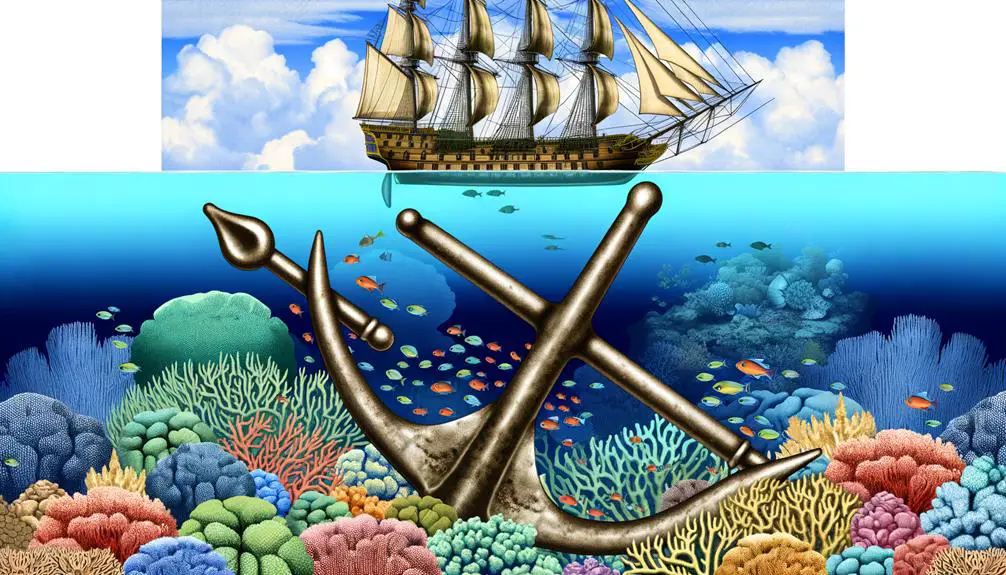
The anchor symbol, deeply rooted in nautical traditions, originally served as an important tool for securing vessels in turbulent waters, thereby embodying concepts of stability and safety.
Historically, the anchor's practical function was crucial; it provided a reliable means to prevent ships from drifting due to wind or currents. Mariners and shipbuilders meticulously designed anchors to maximize their holding power, ensuring they could grip the seabed effectively.
Over time, the anchor's presence on ships became a ubiquitous reassurance of security, essential for long voyages and adverse conditions. This utilitarian necessity naturally evolved into a broader emblem of steadfastness and reliability, encapsulating the essence of maritime life.
Its role extended beyond mere functionality to symbolize the enduring human quest for security amidst uncertainty.
Ancient Symbolism

In ancient civilizations, the anchor emerged as a potent symbol representing hope, steadfastness, and eternal life, transcending its maritime origins to become a profound emblem in various cultural and religious contexts. In the Mediterranean, it symbolized safety and resilience, while in Roman times, it often denoted stability and strong foundations. The Greeks and Egyptians also utilized the anchor as a symbol of balanced dualities, such as life and death.
| Civilization | Symbolic Meaning |
|---|---|
| Mediterranean | Safety, Resilience |
| Roman | Stability, Foundations |
| Greek & Egyptian | Balanced Dualities |
These ancient interpretations underscore the anchor's significance, demonstrating its versatility and enduring relevance across different societies and epochs. This multidimensional symbolism enriches our understanding of ancient worldviews.
Religious Significance
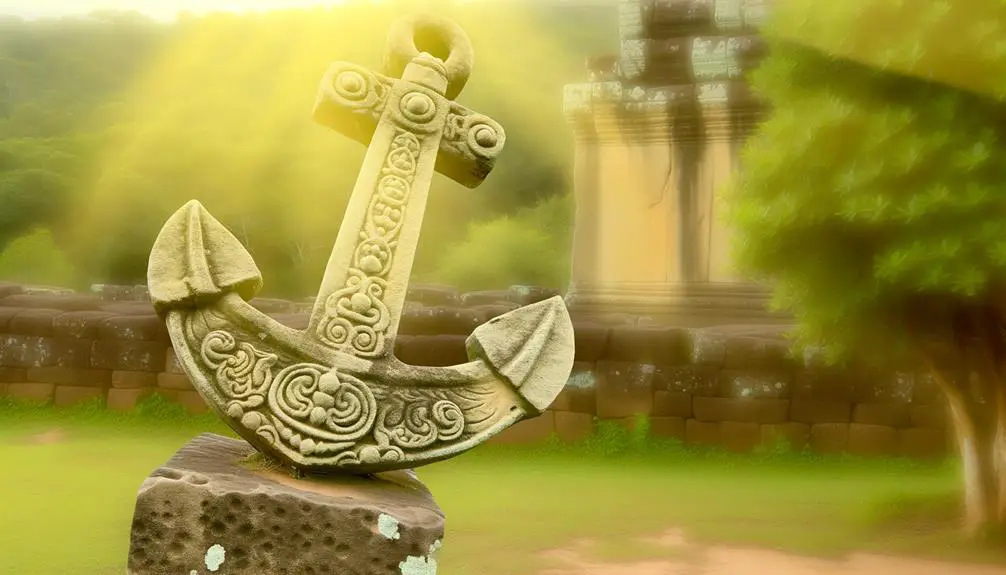
Throughout various religious traditions, the anchor has been imbued with profound spiritual connotations, symbolizing faith, hope, and salvation. In Christianity, it often represents steadfastness and the promise of eternal life, drawing from Hebrews 6:19, which depicts hope as 'an anchor for the soul, firm and secure.' Early Christians used the anchor as a covert symbol to identify themselves during periods of persecution, intertwining it with the cross.
In Hinduism, the anchor can signify stability and grounding, essential for spiritual growth. Similarly, in Buddhism, it symbolizes the anchoring of the mind amidst the turbulent waves of samsara. Across these diverse religious landscapes, the anchor serves as a powerful emblem of spiritual resilience and divine assurance.
Modern Cultural Interpretations

Modern cultural interpretations of the anchor symbol often encompass themes of stability, perseverance, and a connection to maritime heritage. This emblem, deeply embedded in nautical traditions, now transcends its original context to represent steadfastness in the face of adversity.
In contemporary settings, an anchor symbolizes a grounding force, providing individuals with a sense of security and constancy. The enduring nature of the anchor metaphorically conveys resilience, reflecting one's capacity to remain poised amidst turbulent times.
Additionally, its association with the sea evokes a nostalgic reverence for exploration and adventure, bridging the past with the present. Consequently, the anchor remains a potent symbol in modern culture, embodying a blend of historical reverence and current-day significance.
Tattoos and Personal Meaning
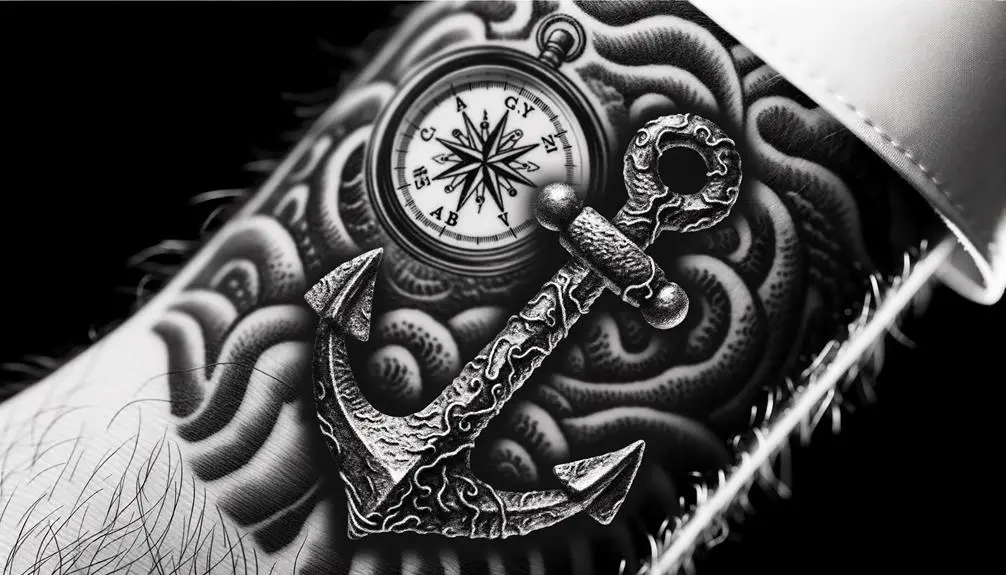
The anchor symbol, frequently chosen for tattoos, embodies a rich tapestry of personal meaning and cultural significance that resonates deeply with individuals. Historically linked to sailors and maritime traditions, it represents stability, hope, and steadfastness.
For many, an anchor tattoo serves as a reminder to stay grounded amidst life's tumultuous waves. It often signifies a connection to one's roots or a steadfast commitment to personal principles. The choice of an anchor can also reflect resilience and the strength to remain unwavering in the face of adversity.
Additionally, it can symbolize a meaningful relationship, acting as a metaphorical anchor in a person's life. This way, the anchor tattoo transcends mere aesthetics, encapsulating profound personal narratives and enduring values.
Jewelry and Fashion
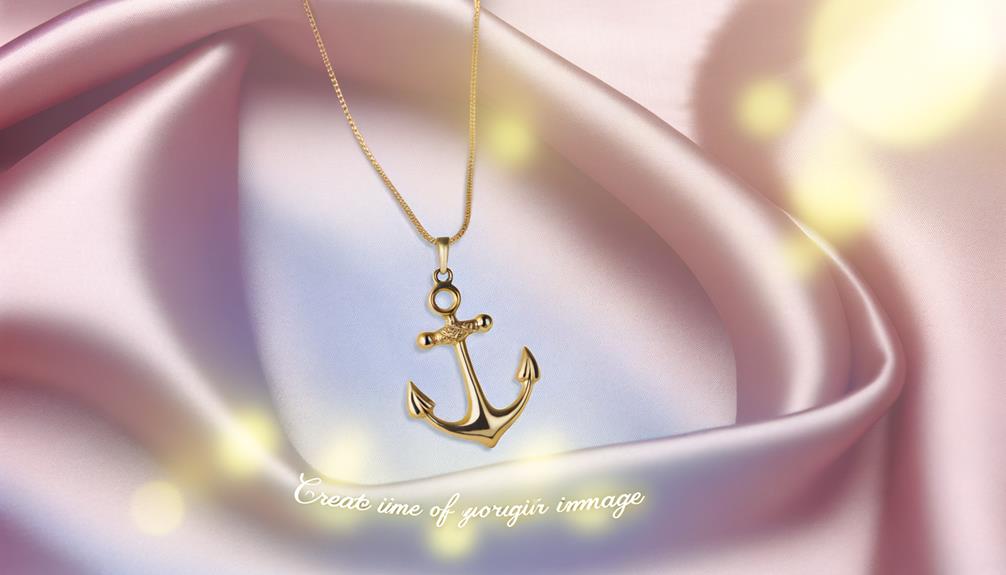
Just as anchor tattoos carry profound personal narratives and cultural significance, anchor motifs in jewelry and fashion symbolize stability and timeless elegance. These symbols, often crafted in precious metals and adorned with gemstones, evoke a sense of groundedness and resilience.
In fashion, the anchor motif transcends fleeting trends, embedding itself into classic design aesthetics. It serves as a versatile emblem, harmonizing with both casual and formal attire. The anchor's maritime heritage infuses pieces with a sense of adventure and exploration, while its robust form conveys strength and security.
Consequently, anchor-themed accessories are not merely decorative; they resonate deeply with wearers, embodying both stylistic sophistication and an enduring connection to personal values.
Philosophical Insights

Anchors, as symbols, hold profound philosophical significance, representing concepts of stability, hope, and steadfastness amidst the tumultuous currents of life's uncertainties.
Philosophically, the anchor embodies a fixed point of assurance in a world characterized by constant change and unpredictability. It underscores the importance of having firm beliefs or values that provide guidance and reassurance, akin to a literal anchor preventing a vessel from drifting aimlessly.
This symbolism can be extended to the human experience, where core principles and convictions serve as an individual's anchor, enabling resilience and composure in the face of adversity.
Therefore, the anchor transcends its physical utility, offering a metaphorical foundation upon which one can build a life of purpose and determination.
Romantic Connotations

Beyond its philosophical significance, the anchor also carries rich romantic connotations, symbolizing unwavering love and commitment in relationships.
Rooted in maritime traditions, where anchors provide stability amidst turbulent seas, this symbol extends metaphorically to human connections, representing the grounding force in romantic partnerships.
The anchor signifies a steadfast bond, suggesting that love can endure life's adversities. It conveys a promise of faithfulness, support, and reliability, key pillars in enduring relationships.
Often exchanged as jewelry or tattoos, anchors serve as intimate tokens of devotion, reinforcing the idea of partners anchoring each other through emotional storms.
Consequently, the anchor's romantic symbolism underscores the ideals of enduring affection and the mutual strength shared between lovers, fostering a deep sense of security and trust.
Conclusion
The anchor symbol, steeped in nautical origins and ancient symbolism, has transcended time to embody various cultural, religious, and personal meanings.
From representing stability and hope to symbolizing faith and resilience, its interpretations are manifold.
Modern cultural contexts reveal its integration into fashion, tattoos, and romantic connotations, signifying both personal and philosophical insights.
The anchor's enduring presence across diverse domains underscores its profound resonance and adaptability, reflecting deeply ingrained human values and aspirations.





